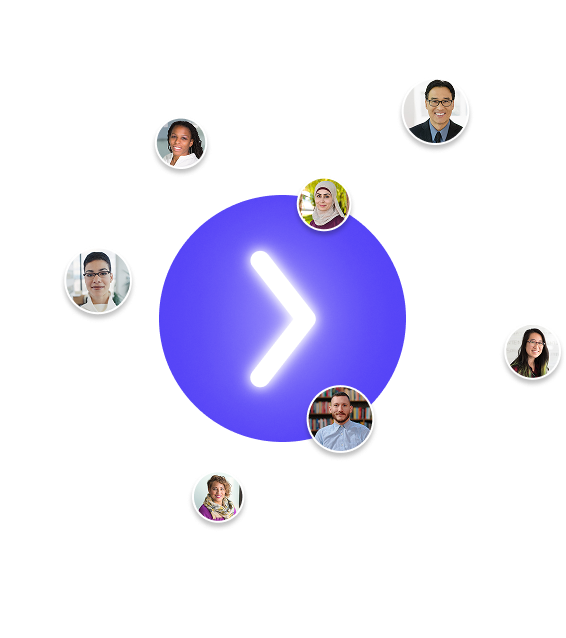
Subscribe to our Blog
We're committed to your privacy. SayOne uses the information you provide to us to contact you about our relevant content, products, and services. check out our privacy policy.

Hari KrishnaFebruary 9, 202410 min read

Generating table of contents...
Mobile App localization goes beyond mere translation. It's about adapting your app to fit users' cultural norms and language preferences in different regions. This process is crucial for app developers aiming for global reach, ensuring that an app is accessible and appealing to a wide audience, regardless of where they are.
Localizing your app can significantly boost its growth. It opens up new markets by making your app more user-friendly to a global audience. This isn't just about changing words; it's about tweaking your app's functionality and content to resonate with local users. For example, adjusting date formats and currency and even incorporating local trends can make a huge difference.
The global app market is enormous and continues to grow. Tapping into this potential means recognizing users' diversity and specific needs. By localizing your app, you're not just expanding your user base but also building a connection with your audience, showing that you value and understand their cultural context.
In short, app localization is not just a nice-to-have; it's a must-do for developers looking to make their mark on a global scale.
Unlike simple translation, localization reimagines an app to align with cultural norms. It's the difference between merely changing the language and tweaking the app's entire user experience to feel right at home in any country.
Localization means modifying icons, adapting currencies, and meeting local legal standards. It's about ensuring an app respects local customs and communicates in a way that feels natural to its users.
Netflix excels in localization by curating its content library and user interface for each market. It understands that viewers in Brazil might have different preferences from those in Germany, leading to a tailored viewing experience that resonates on a local level.
Read More on How To Start A Streaming Service App like Netflix
The McDonald's app showcases localization by adjusting its menu to reflect local tastes. It highlights vegetarian options in India, catering to a significant part of the population. Meanwhile, in Japan, the app promotes items like the Teriyaki McBurger, offering a menu that feels uniquely catered to Japanese customers.
Localization is more than just translation; it's about crafting an app experience that feels like it was designed with the local user in mind from the start. By focusing on these details, apps like Netflix and McDonald's increase their global appeal and deepen their connection with users worldwide.
Checkout our blog on How to Create a Mobile App Prototype in 2024 (Top Tools & Examples

App localization is not just about translating your app into different languages. It's about tuning your app to connect deeply with users across the globe. Here's how it drives app growth:
App localization is smart for any app developer looking to expand their user base and improve user experience. It's about making your app a friendly, local spot in the global village of the internet.
Checkout The Benefits of Investing in Cross-Platform Applications
Stepping into new markets is a smart move when looking at app growth. But how do you pick where to go and what to do? Here's a straightforward guide:
Choosing Markets
Start by figuring out which markets have the most promise for your app, but don't ignore the risks. Look at user numbers, income levels, and how keen they are on apps like yours. Also, consider any legal or cultural hurdles that might slow you down.
Understanding Locales
Locales are about mixing language and place to fit your app to local users. It's more than translating; it's about matching your app's function and feel to what locals expect.
Wider Reach Through Secondary Localization
Don't stop at primary markets. Secondary localization means tweaking your app for additional languages and cultures to attract even more users. This could mean adjusting colors, payment methods, or how you present content to match local tastes.
Optimizing Local User Experience
Focus on fine-tuning the user experience to align with local expectations. This means going beyond language, addressing local user interface preferences, payment methods, and cultural nuances in design. Tailor your app's look, feel, and functionality to meet local tastes and habits, ensuring a smoother user journey.
Engaging with Local Communities
Get involved with your target market's local communities. Use social media, local influencers, and user feedback to understand what works and what doesn't. This direct engagement can guide further localization efforts, making your app more relevant and appealing to local users. It's also a great way to build trust and loyalty among your new user base.
With these steps, you're setting your app up for growth in new territories without falling into common traps. Keep the conversation real and your approach clear, and you'll connect with users around the globe.

App localization is tailoring your app to meet your target audience's cultural and language requirements. Here's an expanded look at the tools and strategies involved:
Making your app ready for a global audience involves a few key steps:
Incorporating these tools and strategies into your localization efforts can significantly widen your app's global reach, making it more accessible and appealing to users worldwide.
Finding the right keywords requires a mix of creativity and analysis. Start by brainstorming words related to your app's features, benefits, and the problems it solves. Look at competitors in your target markets to see which keywords they're using. User reviews can also be a goldmine of keyword ideas, revealing the language real users use to describe your app or its competitors. To measure the effectiveness of your chosen terms, use a reliable keyword rank tracker to monitor how your app ranks for targeted keywords across different regions and languages.
ASO tools like Sensor Tower, App Annie, and Mobile Action provide insights into keyword performance, competitor analysis, and market trends. They help by:
Using these tools, you can refine your keyword list, ensuring it's optimized for each locale your app targets. This ongoing process keeps your app relevant in the ever-changing app market landscape.
Checkout The App Store Optimization Checklist for Your Business Apps
Looking for a skilled and dedicated application development firm? Choose SayOne for unparalleled app localization expertise. Our team ensures cultural sensitivity, implementing a strategic approach that includes thorough market research, adaptation to regional trends, and user behavior analysis.
We collaborate closely with you to create a localized app that resonates with diverse audiences. Contact us today and let SayOne bring your project to life.

We're committed to your privacy. SayOne uses the information you provide to us to contact you about our relevant content, products, and services. check out our privacy policy.

About Author
Helping Companies Scale Tech Teams 2X Faster with Pre-Vetted Talent | Contract Hiring & Resource Augmentation | Cutting Hiring Costs by 40%

We collaborate with visionary leaders on projects that focus on quality